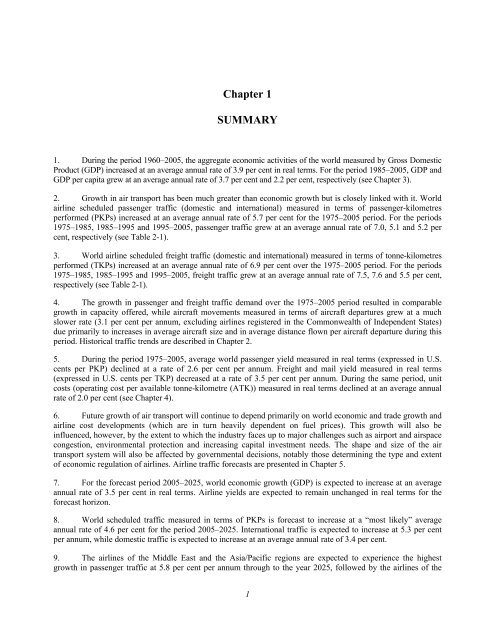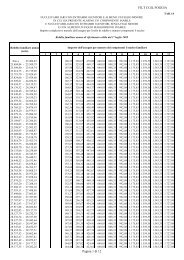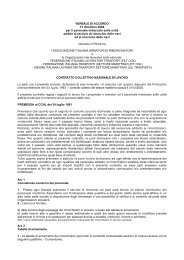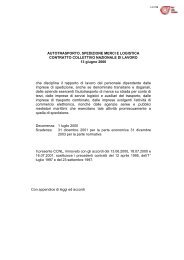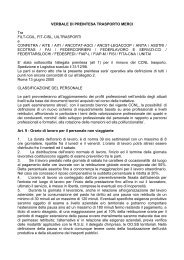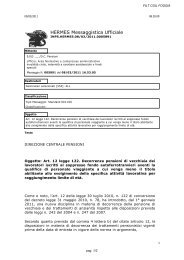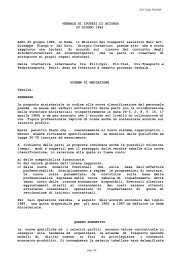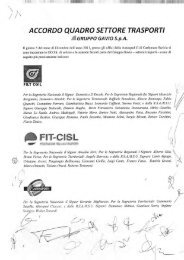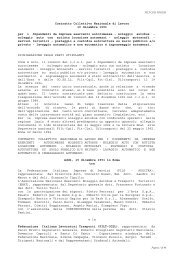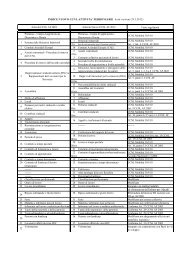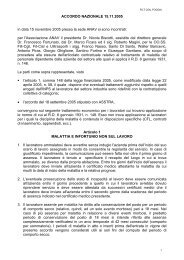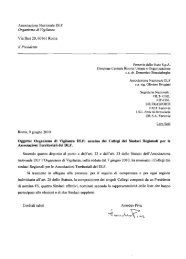Outlook for Air Transport to the Year 2025 - FILT CGIL Foggia
Outlook for Air Transport to the Year 2025 - FILT CGIL Foggia
Outlook for Air Transport to the Year 2025 - FILT CGIL Foggia
- No tags were found...
Create successful ePaper yourself
Turn your PDF publications into a flip-book with our unique Google optimized e-Paper software.
Chapter 1SUMMARY1. During <strong>the</strong> period 1960–2005, <strong>the</strong> aggregate economic activities of <strong>the</strong> world measured by Gross DomesticProduct (GDP) increased at an average annual rate of 3.9 per cent in real terms. For <strong>the</strong> period 1985–2005, GDP andGDP per capita grew at an average annual rate of 3.7 per cent and 2.2 per cent, respectively (see Chapter 3).2. Growth in air transport has been much greater than economic growth but is closely linked with it. Worldairline scheduled passenger traffic (domestic and international) measured in terms of passenger-kilometresper<strong>for</strong>med (PKPs) increased at an average annual rate of 5.7 per cent <strong>for</strong> <strong>the</strong> 1975–2005 period. For <strong>the</strong> periods1975–1985, 1985–1995 and 1995–2005, passenger traffic grew at an average annual rate of 7.0, 5.1 and 5.2 percent, respectively (see Table 2-1).3. World airline scheduled freight traffic (domestic and international) measured in terms of <strong>to</strong>nne-kilometresper<strong>for</strong>med (TKPs) increased at an average annual rate of 6.9 per cent over <strong>the</strong> 1975–2005 period. For <strong>the</strong> periods1975–1985, 1985–1995 and 1995–2005, freight traffic grew at an average annual rate of 7.5, 7.6 and 5.5 per cent,respectively (see Table 2-1).4. The growth in passenger and freight traffic demand over <strong>the</strong> 1975–2005 period resulted in comparablegrowth in capacity offered, while aircraft movements measured in terms of aircraft departures grew at a muchslower rate (3.1 per cent per annum, excluding airlines registered in <strong>the</strong> Commonwealth of Independent States)due primarily <strong>to</strong> increases in average aircraft size and in average distance flown per aircraft departure during thisperiod. His<strong>to</strong>rical traffic trends are described in Chapter 2.5. During <strong>the</strong> period 1975–2005, average world passenger yield measured in real terms (expressed in U.S.cents per PKP) declined at a rate of 2.6 per cent per annum. Freight and mail yield measured in real terms(expressed in U.S. cents per TKP) decreased at a rate of 3.5 per cent per annum. During <strong>the</strong> same period, unitcosts (operating cost per available <strong>to</strong>nne-kilometre (ATK)) measured in real terms declined at an average annualrate of 2.0 per cent (see Chapter 4).6. Future growth of air transport will continue <strong>to</strong> depend primarily on world economic and trade growth andairline cost developments (which are in turn heavily dependent on fuel prices). This growth will also beinfluenced, however, by <strong>the</strong> extent <strong>to</strong> which <strong>the</strong> industry faces up <strong>to</strong> major challenges such as airport and airspacecongestion, environmental protection and increasing capital investment needs. The shape and size of <strong>the</strong> airtransport system will also be affected by governmental decisions, notably those determining <strong>the</strong> type and exten<strong>to</strong>f economic regulation of airlines. <strong>Air</strong>line traffic <strong>for</strong>ecasts are presented in Chapter 5.7. For <strong>the</strong> <strong>for</strong>ecast period 2005–<strong>2025</strong>, world economic growth (GDP) is expected <strong>to</strong> increase at an averageannual rate of 3.5 per cent in real terms. <strong>Air</strong>line yields are expected <strong>to</strong> remain unchanged in real terms <strong>for</strong> <strong>the</strong><strong>for</strong>ecast horizon.8. World scheduled traffic measured in terms of PKPs is <strong>for</strong>ecast <strong>to</strong> increase at a “most likely” averageannual rate of 4.6 per cent <strong>for</strong> <strong>the</strong> period 2005–<strong>2025</strong>. International traffic is expected <strong>to</strong> increase at 5.3 per centper annum, while domestic traffic is expected <strong>to</strong> increase at an average annual rate of 3.4 per cent.9. The airlines of <strong>the</strong> Middle East and <strong>the</strong> Asia/Pacific regions are expected <strong>to</strong> experience <strong>the</strong> highestgrowth in passenger traffic at 5.8 per cent per annum through <strong>to</strong> <strong>the</strong> year <strong>2025</strong>, followed by <strong>the</strong> airlines of <strong>the</strong>1


